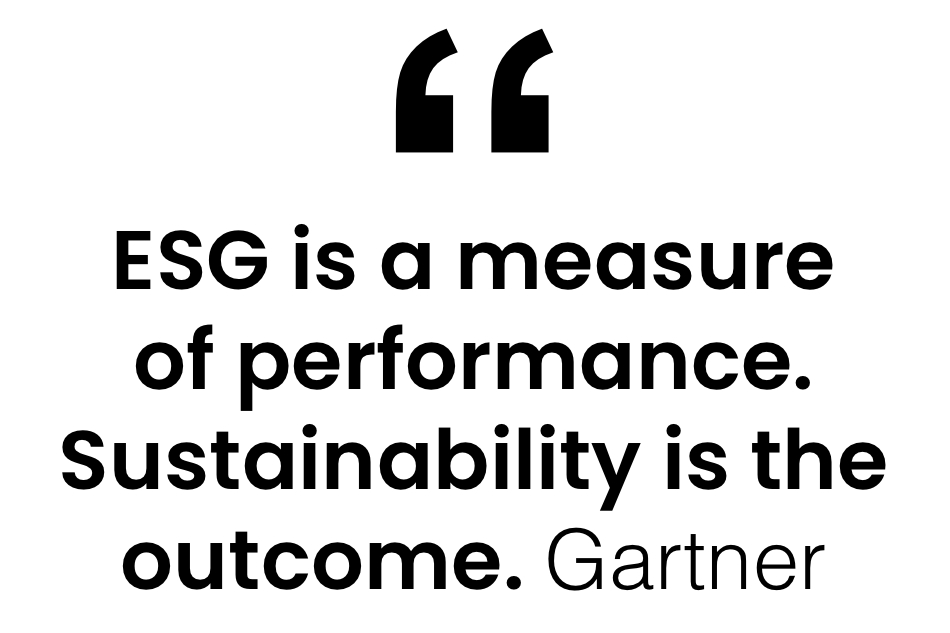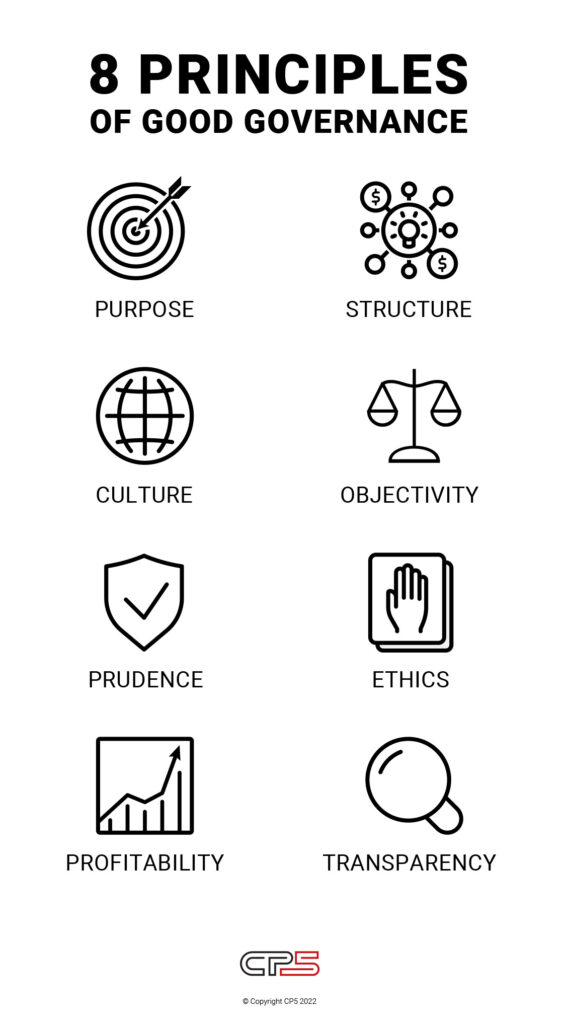Governance is underappreciated compared to other ESG issues. A rethink of what well-run companies entail is largely overdue, while proven technology can help build and monitor robust frameworks
As it currently stands, it wouldn’t be wrong to say that governance is the least understood of the three ESG pillars.
On the surface, it’s also the least appealing.
Staff and leadership continue to salivate at environmentally enhancing products, and at initiatives that benefit staff and the community. Yet with governance, there’s usually no such enthusiasm—even among the top brass.
That’s because governance is often seen as a chore. A set of rules that tell us what we can or cannot do. Think of school. Our first ‘proper’ job. Places where we do as we are told.
Part of the problem lies in the fact that as a subject, governance is somewhat nebulous and abstract. People might think of rainforests and wind turbines when the topic of the environment is tabled. Or smiling employees and happy village children when envisioning social initiatives. Governance has no such tangible associations. As such it’s perceived as dull and boring.

Intuitively human
But governance can be exciting, both during the creation of a company-wide framework, and its day-to-day oversight. Brainstorming with teams about what we stand for is enjoyable and inspiring for all, as too is crafting a fair and equitable corporate hierarchy, and establishing the values that define company cultures.
A shift in mindset is needed. Good governance doesn’t have to be stiff, strait-laced and boring; and office fun doesn’t equate to bad governance, providing it’s good-natured. It’s intuitively human to want to make experiences enjoyable, even when they aren’t.
Equally, the technologies that assist in this area are intriguing: more and more, these are making governance a straightforward and enjoyable exercise.

Defining good governance
To date, most professionals aren’t really sure what governance involves. ‘Board independence’ frequently gets cited, as does ‘anti-bribery and corruption’. And of course, ‘compliance’ in heavily regulated industries like healthcare or financial services. But as a discipline, it’s much, much more than this.
In our experience, good governance can be broken down into eight key principles. Purpose outlines the business’s sustainability goals, objectives and vision. It ensures that everyone in the organisation is on the same page. Structure outlines hierarchy, roles and responsibilities, making it clear who’s accountable for what.
Meanwhile, Culture encourages staff, suppliers and partners to buy into shared beliefs. When business leaders talk about creating healthy, positive cultures, they’re actually referencing the governance aspect of ESG.
Objectivity emphasises the importance of informed decision-making, while Prudence feeds into robust enterprise risk management and appropriate controls, as well as suitable financial planning and spend. Ethics ensures that every decision is grounded in strong, positive moral values.
Profitability, resulting from cost efficiencies and high productivity, is what keeps the business growing, and Transparency not only reinforces accountability at all levels, but also ensures that the company’s sustainability story is told.

First, not last
The above are essential for running a successful and sustainable company. Without them, customers, suppliers and employees are sceptical of what the business stands for; decision-making is often rash, and risks are overlooked; while inside seemingly opaque operating models, nefarious behaviour lurks.
More importantly, investors remain hesitant.
Given how governance sets the company’s course, businesses should really cement their governance frameworks first. Yet most of the time, it’s almost an afterthought—or at least low on the agenda.
A company that defines its governance framework early essentially establishes a sturdy foundation upon which it can build its environmental and social agendas. Such a company will also have a good idea of the suite of technologies that it will need to drive sustainability across all parts of the enterprise.

Tech conundrum
While the scope of sustainability technology is vast—spanning renewable energy, water recycling and waste management in the clean-tech space; to human capital management software and robots in the social sphere—in the governance space, the range of solutions almost exclusively involves enterprise IT. In fact, ‘sustainable IT’, as it is universally dubbed, underpins company efforts across all three ESG pillars, irrespective of industry.
This poses a significant conundrum for sustainability, technology and other C-suite executives: where do we start, and which solutions do we choose? With a bewildering array of software solutions available on the market, provided by anyone from Big Tech behemoths to niche one-man-band start-ups, picking the best-fit technologies for one’s own enterprise can be a major challenge.
In our view, working in reverse is perhaps the best approach. That is, define the outcome and parameters of each governance principle, and then explore if there is a solution that can help you realise the principle more easily and quickly.

Data access
A further challenge for many is access to data. Historically, companies have relied heavily on consulting firms to manage sustainability information. However, most of the tools traditionally used to collect, store and monitor this data are becoming mainstream, and can be accessed by companies through software-as-a-service offerings. A much smaller price tag is also a draw. This means businesses can now cost-effectively collect and manage data without relying on a third party, and use this to continually improve business operations.
Further, the intersection of sustainability, technology and innovation is changing the role of tech professionals. Almost half of CIOs globally are jointly responsible for setting sustainability goals, with 45% of such roles now assessed on achieving these outcomes. And for good reason: research shows that brands that take the lead on sustainability issues create up to 2.6 times more value for shareholders than their peers.
Progress has been slow however. Only 7% of companies have fully integrated their technology strategies with their sustainability strategies. For those slow off the mark, it’s still a level playing field.

Core solutions
While there are many solutions that can enhance governance, some tasks should remain manual. For instance, people should always define a company’s purpose. Similarly, humans should draw up the firm’s hierarchy and core values.
Unfortunately, there isn’t a single all-encompassing solution to assist in areas that can be automated, though some cloud vendors provide a range of these through multiple partnerships, and a handful of enterprise resource planning (ERP) providers offer solutions in most of the below areas. Here are the technologies that are leading the charge.
— Human capital management (HCM) software, including HR analytics, can help realise Structure, Culture and Purpose. Not only does it document and distribute a company’s goals, objectives, vision and culture, it also ensures teams and departments are kept up to date, while simultaneously enabling HR to better attract, retain and develop talent. Collaboration software, too, can help foster positive culture, while also helping companies define their purpose.
— Big data, business intelligence (BI) or advanced analytics are powerful tools that can provide historic, real-time and—thanks artificial intelligence (AI)—potential future trends across all areas of the business. These help realise Objectivity, by enabling leaders to make informed decisions based on real data.

— Governance, risk and compliance (GRC) software does what it says on the tin. It examines each enterprise risk—including financial, infrastructure (including cybersecurity), marketplace or reputational risks—and informs the company of the severity of each threat. It’s not all negative though. Some GRC platforms focus on the upside as well, highlighting opportunities and competitive advantages. Employee monitoring technology (EMT) is also useful given the rise in work-from-home, especially in industries and roles where employees’ focus on their day-to-day tasks may wane—or more critically, where inappropriate mission-critical decisions may be made. These solutions can help facilitate Prudence and Ethics.
— Many solutions aim to help boost Profitability, including those already mentioned above. These typically span all stages of the value chain. Regarding financials for instance, treasury management systems (TMSs) carefully administer payments and receivables, and can aptly manage liquidity and investments. In terms of user experience (UX) for example, recent advancements in the Customer Relationship Management (CRM) space have helped enterprises improve CX to achieve better business outcomes. One such development is intelligent virtual agents (IVAs) that are indistinguishable from live agents; these enable businesses to deliver enhanced CX and more effective customer engagement with a smaller workforce. Equally, thanks to blockchain technology, supply chain analytics (SCA) software is now able to track in real time the progress of goods in transit. SCA technology can also help ensure ethical sourcing: combined with AI, blockchain is able to track supply and demand in real time, and make purchasing and inventory management decisions to reflect market fluctuations. This leads to less waste as well.
— And lastly, to realise greater Transparency regarding a company’s sustainability credentials, many rely on sustainability management software (SMS), a collection of measurement tools spanning all three ESG areas. Some of these are linked to renowned ratings that allow firms to benchmark their performance in real time. To that end, there are numerous free-of-charge metrics providers incorporated within SMSs, notably GRI and SASB—but there will be gaps. By its very nature governance is highly qualitative, hence it’s not feasible to apply a figure to disclosures like Purpose or Culture. Going beyond metrics, it is also vital that business leaders clearly communicate their company’s efforts to stakeholders. Whether through an instant messaging platform, emails, a fully-fledged annual report or simple blog post, staff, customers and investors must be kept informed about the positive changes that are taking place within your company. If they aren’t, how would they know to support your efforts? Content amplification technologies include native advertising, EDMs, social posts and other forms of paid, earned and owned content.
Concluding thoughts
Governance remains the least understood of the three ESG pillars. As such it can be difficult for most companies to apply technology to help measure and track their progress. By better understanding the core ingredients of good governance, we can source the most suitable technologies to advance our agendas.
Of course, the above technologies are not an exclusive list. Should you feel strongly that we’ve missed any, do let us know. Similarly, we’re eager to hear differing views on what constitutes good governance. That’s because only through industry dialogue will standards be universally raised.
At CP5, we’re passionate about telling sustainability stories. Whether that’s your company’s story, industry trends, or what the future might hold—we’re eager to work with businesses and industry groups of all sizes and from all sectors.

